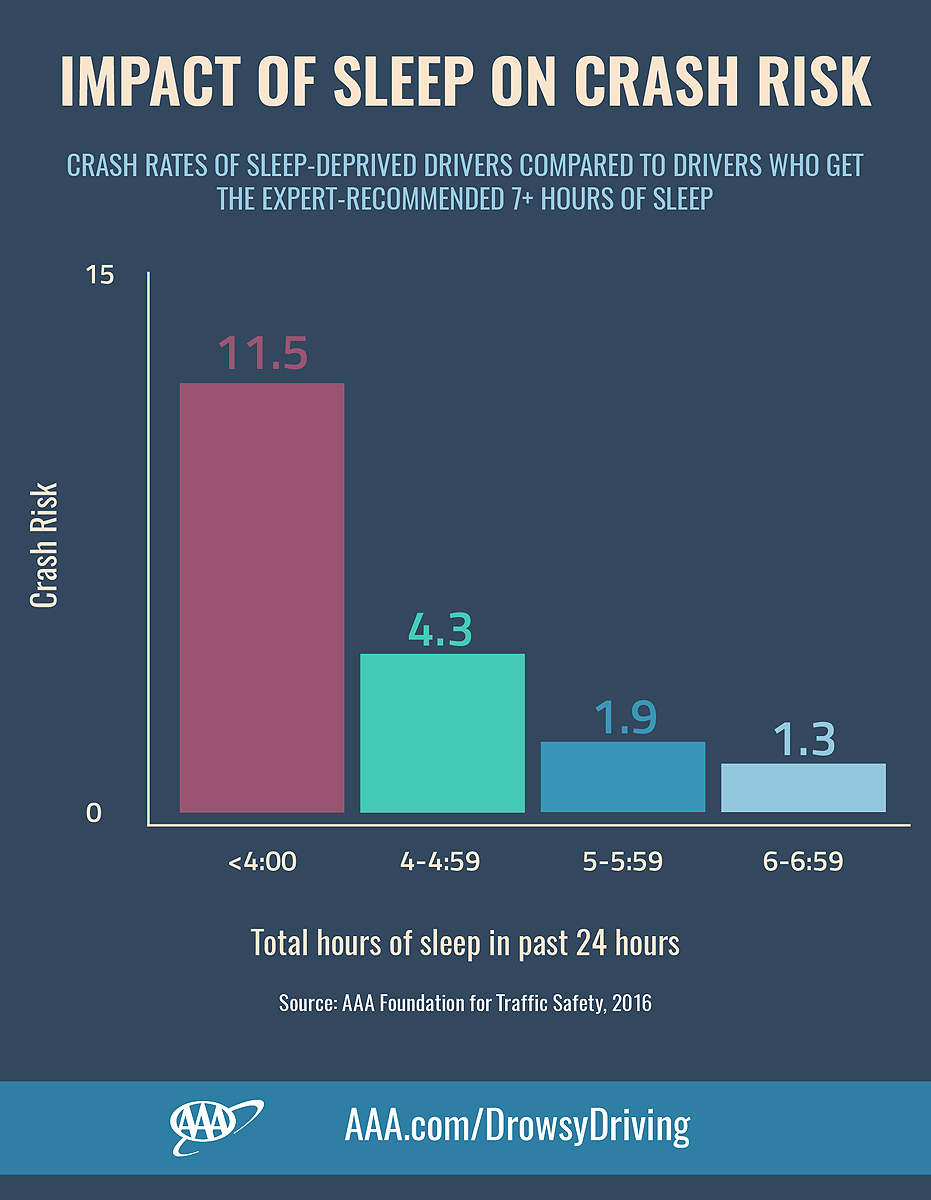Fatigued Driving
When asked about causes of vehicle accidents, most people immediately think of impairment, such as alcohol, or distracted driving, such as texting. However, drowsy, or fatigued driving kills, and is a major problem in the United States. The Centers for Disease Control and Prevention defines drowsy driving as, “the dangerous combination of driving and sleepiness or fatigue,” and the National Sleep Foundation estimates that sixty percent of American adult drivers, about 168 million, say they have driven a vehicle while feeling drowsy in the past year, and more than one-third, approximately 103 million people, have actually fallen asleep while driving!
Additionally, the National Highway Traffic Safety Administration (“NHTSA”) estimates that drowsy driving was responsible for 100,000 crashes, 71,000 injuries, 12.5 billion in monetary losses and 846 deaths in 2014. However, these numbers are believed to be underestimated, as it is difficult to determine if fatigue caused driver error, and up to 6,000 fatal crashes may be caused by drowsy drivers each year.
The Warning Signs of Fatigued Driving
- Disconnected thoughts or daydreaming.
- Frequent blinking or heavy eyelids.
- Persistent yawning or rubbing your eyes.
- Feeling irritable or restless.
- Trouble keeping your head up.
- Trouble remembering driving the last few miles.
- Missing your exit, road signs or traffic signs.
- Hitting the rumble strips, tailgating or drifting into other lanes.
Fatigued driving is so dangerous because it impairs reaction time, reduces a driver’s vigilance and causes problems with processing information.
How to Determine a Fatigued Driver
In our fast-paced society people have learned to juggle many different responsibilities, including family, work and social life which may cause some to be exhausted by the end of the day. Although most people are prone to being fatigued at specific times, there are certain people that may experience a higher risk of fatigued driving, including:
- Shift workers: People who work rotating shifts, nights shifts, double shifts or work more than one job are six-times more likely to be involved in a fatigued driving accident. Shift work may also lead to certain disorders, for example, according to the Alaska Sleep Education Center, shift work sleep disorder is a circadian rhythm sleep disorder that is characterized by excessive daytime sleepiness and insomnia. People who tend to work unusual schedules have their circadian rhythms disrupted, which may cause a number of physiological and mental problems.
- Medication Side Effects: Many medications include sleepiness as a side effect. People that take these medications have a higher risk of fatigued driving. Examples of medications that have a sedating effect are: cold tablets, antihistamines and antidepressants, among others.
- Drivers with untreated sleep disorders: Drivers that do not treat sleep disorders such as obstructive sleep apnea (“OSA”), narcolepsy and insomnia have a higher risk than the average driver for fatigued driving accidents. In all of these disorders the most common symptom is excessive daytime sleepiness.
- Age: Young drivers, from teen years to 25 years old (especially males) are considered an age group that is most likely to be involved in a fatigued driving accident. According to the NHTSA, “drivers younger than 30 accounted for almost two-thirds of drowsy-driving crashes, despite representing only about one-fourth of licensed drivers. These drivers were four times more likely to have such a crash than were drivers ages 30 years or older.” There are many theories as to why young drivers are involved in such a high percentage of fatigued driving accidents, however, the most common theory is that inexperience combined with sleepiness and the tendency to drive at night increases risk.
- Commercial Drivers: People that drive a large number of miles and drive at night are at a much higher risk for fatigued driver accidents. Commercial drivers have also been found to be at a high risk for sleep disorders.
- Business Travelers: People who travel frequently for their jobs or for leisure who may be suffering from jet lag and crossing different time zones, or spending long hours behind the wheel are also at an increased risk of being involved in a fatigued driver accident.
Fatigued Driving Prevention
Many people believe that they can just “power through” a difficult driving situation by turning on the radio or rolling down their window to get some fresh air, however, these tactics do little to actually combat fatigued driving. There are better ways to prevent drowsy driving, before hitting the road drivers should:
- Get a good night’s sleep before a long drive.
- When taking longer trips plan to do the majority of your driving during the day.
- If you are feeling fatigued, or notice signs that you may be drowsy, and you have a passenger in the vehicle, ask the passenger to drive.
- If you are feeling drowsy, pull over and rest or sleep at a rest stop.
- Use caffeine, which will provide a short-term boost, however, the effects may only last up to an hour and do not provide a long-term solution.
- Consult your physician for diagnosis and treatment of any possible sleeping disorders.
- If you are driving a long distance, schedule regular stops every 100 miles or two hours.
Get Involved
The National Sleep Foundation sponsors Drowsy Driving Prevention Week, an annual, national campaign to raise awareness of the dangers of driving while tired. In 2016, Drowsy Driving Prevention Week was November 6-13. The campaign chooses a week in November every year; people that are interested in Drowsy Driving Prevention Week, or becoming a Drowsy Driving Advocate, may find more information here.



